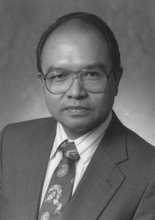Blind Technique for Subclavian Central Line Placement
Transcription
CHAPTER 1
This is a different technique for central line placement. She's got a different method than what you've learned. The bevel of the needle - it's indicated to be the same position as that bevel in the green piece of the needle, the cannula. So we tested the wire. Right, you should make sure that that goes anteriorly because the bevel is up. And if she rotates it, then it will follow it down. Now this is a technique that I - has maybe changed now from when I was a resident. This is different from what I was taught. What you learned? Okay. Yeah.
CHAPTER 2
So, watch this. It goes at the junction. And you're aspirating the entire way? Yeah, that's what it's doing. Yep. So she's stabilizing the clavicle and scraping beneath it, yeah? There, you found it. Yeah.
CHAPTER 3
And then you thread the wire. It should, the… You guys have…
CHAPTER 4
Take the needle out, then you insert the cannula. Pressure immediately beneath the clavicle so that it doesn't bleed. And then we're putting in the dilator? Yes, that's what she's doing. And then she's make a nick on the skin. Make a small incision in the skin to pass the dilator. Removing the dilator, placing pressure back over the wire in the incision.
CHAPTER 5
Okay, so when you're passing the catheter you want to be sure that there's no aberrant electrical activity from the heart. We don't have fluoroscopy to see it, so we're not actually visualizing what we're seeing. So, extremely important to notice what's going on with the cardiac rhythm. The wire is out. And then you can advance the catheter. 6 cm from the sternal angle.
CHAPTER 6
She's flushing each line to be sure that it withdraws and you can push forward. This is slick. Aspirates, sorry, thank you - yeah, flush - I've never seen it that way. You learn from her. So she feeds the wire back into the - guide from which it came. These are the three lumens - antibiotics, IV, and a heart bpm. Mmm. She is very efficient. Mmm. No huss, no fuss, no muss, no fuss.
CHAPTER 7
She's really slick. So if you want to be good, learn from her. She's really slick in doing central line. I've never seen anybody so slick than her. Yeah. See, all her movements are all purposeful here. There's reason for every movement. I told you, it's not the speed, it's based upon quality of motion. Mm hmm. And every motion she has has quality, there's a reason for it. No wasted motion. That makes you a good surgeon. Mmm. You see all the fuss we do in the States? Mm hmm. Big fuss, for nothing. Mm hmm. We waste so much time, we waste too much technology, we waste a lot of money. Mmm. That's not necessary. For a simple thing like that. That should be simple. Right. Mm hmm. So you've got to learn from her how to do it that way. This is amazing. This is really slick. Yeah, if you're feeling it. Yeah, sure. So if we can teach our staff how to do it this way, we could save a lot of trouble in the United States. Okay. What you saw, you won't see it anywhere. You can go to any medical center, medical school right now, you won't see that. True, true. So this method that she showed to us is her technique. Si, she says it's a... Because I've not seen - I've not seen that method before - what she's showing you. And it's a gutsy technique, all right? It's blind, but it's safe because she's done it many times. Mm-hmm. She says it's a combination of techniques that she's acquired over the years. Right. So the dressing involves a large Tegaderm cut in half placed over the site. And then she puts the other half to stabilize the three lines. Okay. Gracias.


